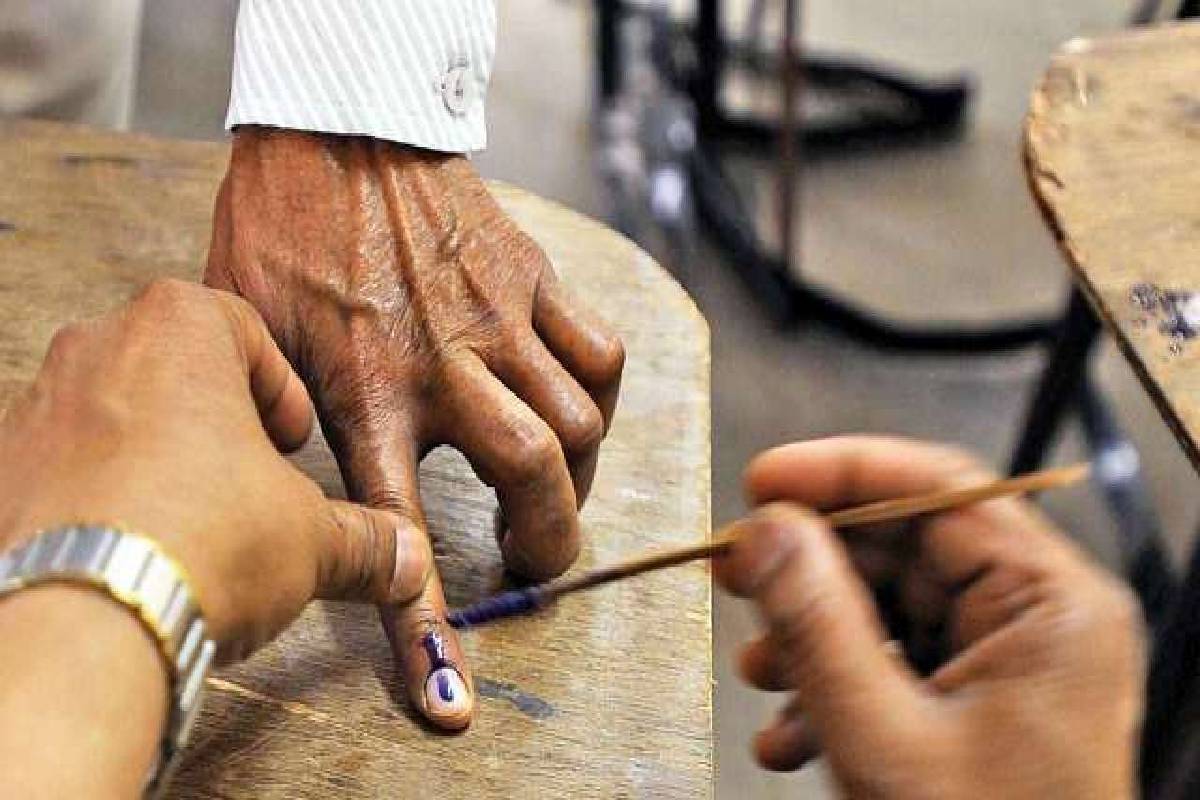As many as 7,72,872 voters have been added to the final electoral rolls during the special summary revision. The final electoral rolls have been published on Friday.
This showed a net increase of 7,72,872 electors in the final electoral roll, i.e. a 10.19 percent net increase of the registered electors over the Draft Roll.
Advertisement
The final electoral rolls have a total of 83,59,771 electors, out of which 42,91,687 are male, 184 belong to third gender and 40,67,900 are female.
The elector population ratio has increased from 0.52 to 0.58 during this SSR. The gender ratio of the final electoral roll has increased from 921 to 948.
As many as 613 new polling stations have been added.
An official spokesman said the highest-ever additions have been made in the electoral roll in the UT of J&K. 30,1961 electors in the age group of 18-19 have been added.
After the completion of delimitation exercise in the UT of Jammu and Kashmir, the Election Commission of India (ECI) ordered pre-revision activities in the UT of Jammu and Kashmir on 10 June 2022, which primarily included the task of mapping the existing Electoral Rolls of 83 pre-delimitation constituencies to the post-delimitation 90 constituencies, in accordance with the Delimitation Commission’s Order, rationalization of polling stations and integrations of the electoral rolls.
On completion of the post delimitation follow-up and pre-revision activities, the Commission ordered special summary revision of photo electoral rolls in the Union Territory of Jammu and Kashmir, with reference to 1 October 2022 as the qualifying date.
As per schedule notified by the Commission, the draft rolls were published on 15th September 2022. The draft rolls saw an addition of 613 new polling stations, which resulted in the total polling station count as 11,370 for the UT of J&K. The total electors on draft electoral rolls were 75,86,899 out of which 39,48,525 electors were male, 36,38,262 were female and 112 third gender.
A total of 39,192 electors were flagged as PwD and 1226 as marked electors. Photo coverage in the electoral roll stood at 99.99 percent as compared to 96.81 percent during final publication 2019. Gender ratio of the draft electoral roll was 921 as compared to Census gender ratio of 914, as per the projected population. The elector population ratio of the draft electoral roll was 0.52.
The emphasis of the Commission led by Chief Election Commissioner Rajiv Kumar on registration of young voters as well as the marginalised sections of society including persons with disabilities, third gender, women, etc., has yielded positive results.
The claims and objections were accepted from 15 September, 2022 to 25 October, 2022, i.e. for a period of 40 days. This was followed by a period of 15 days till 10 November, 2022 for the disposal of all claims and objections.
During this period, a record 11,40,768 claims were received through Form-6 for inclusion of names in the electoral rolls across the UT. Out of these, 11,28,672 claims were accepted while rejecting only 12,096 claims. This included 30,1,961 claims of inclusion in the age group of 18-19. A total of 41,21,57 requests for deletion were received out of which 35,8,222 were accepted and 53,935 were rejected.
This was for the first time in the history of J&K that more than 11 lakh names were included in a single SSR period.
Overall net addition of 7,72,872 electors i.e. more than 10 percent of the draft electors is a milestone as the best figure till date even in Election year SSRs was less than 2 lakh.
Gender ratio has shown a remarkable increase by 27 points and stands at 948, which is much above the Census gender ratio of the UT. Overall there has been a 6% increase in the elector population ratio making it 58 percent from 52 percent.
The photo coverage in the electoral roll was maintained at 99.99 percent showing that no new entry without a proper photograph has been allowed in the electoral roll. There are 57,253 marked PwD electors in the final electoral roll, an increase of 46 percent over the draft roll.
Though the Special Summary Revision-2022 culminated with the publication of final electoral rolls in the UT on November 25, 2022, the process of continuous updation shall however continue and any eligible citizen who has been left out of the electoral roll can apply though any of the modes of registration, i.e. online though NVSP portal, Voter Helpline APP, Voter Portal or Offline by making an application to the ERO concerned.
With the implementation of four qualifying dates as part of the Commission’s electoral reforms, the qualifying date would get updated to 1st January 2023, after December 31, 2022, paving way for all those young citizens to get registered, who have attained the qualifying age of 18 years between October 1, 2022 and January 1, 2023.









